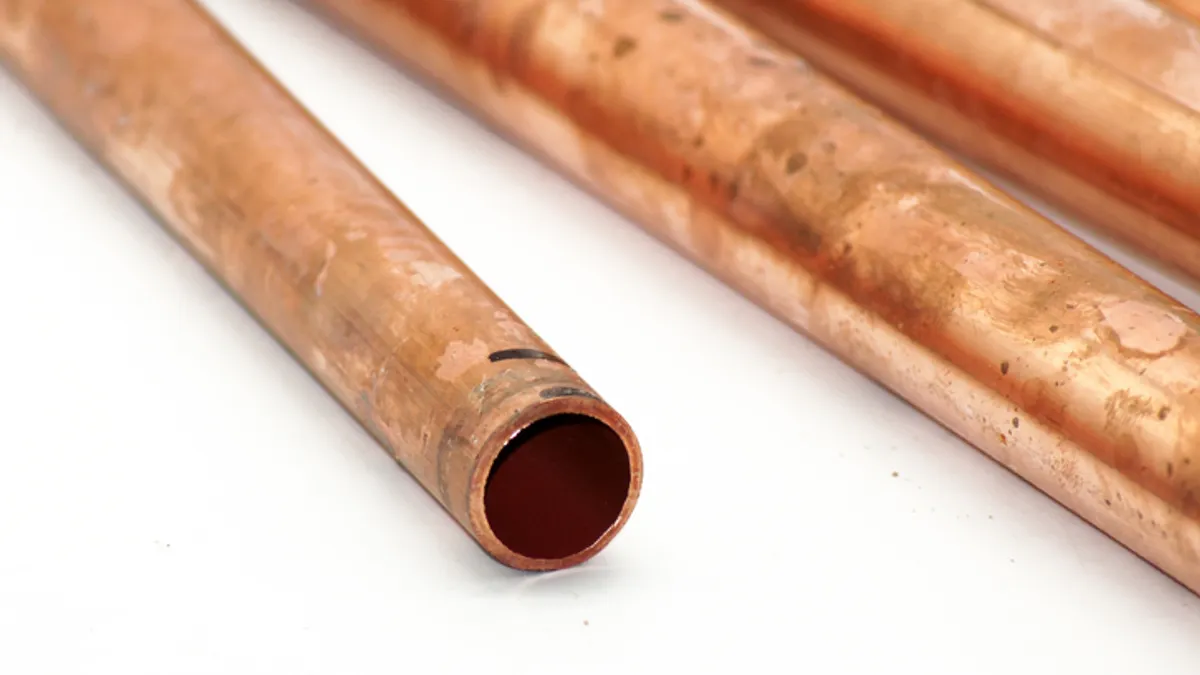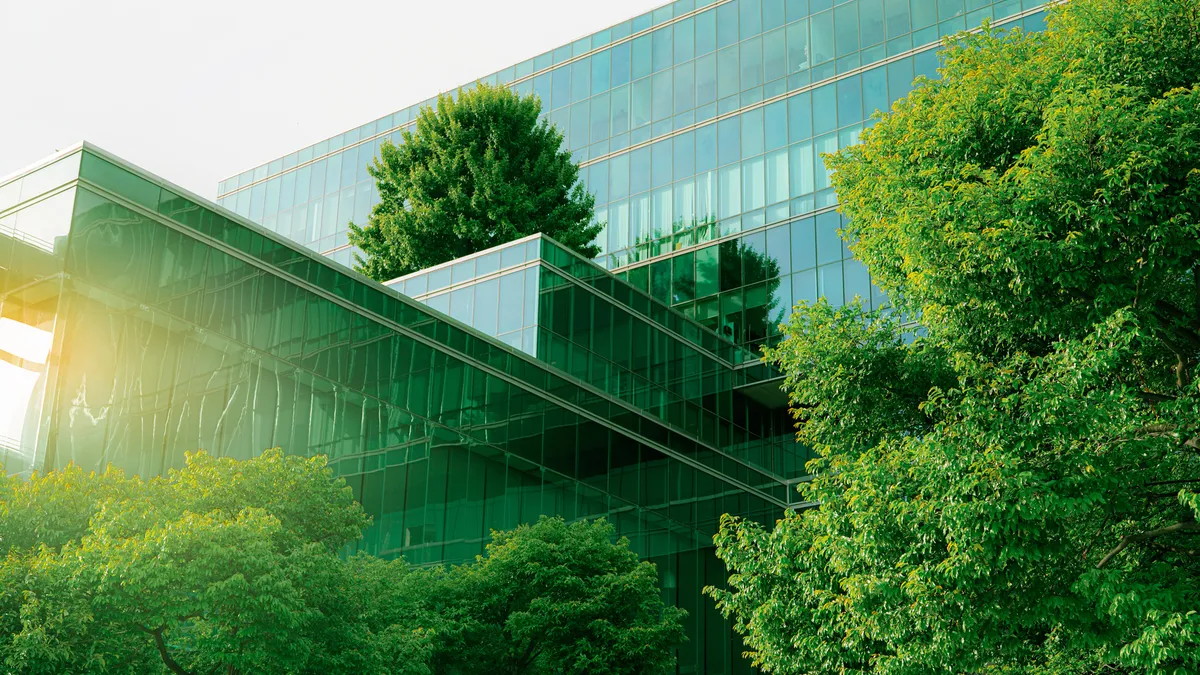With August's arrival comes soaring temperatures across the U.S. Dogs pant, humans sweat and other animals scramble for ways to keep cool as the mercury creeps up the thermometer, with a common thread emerging for relief: water.
Water is known for its life-giving properties, and in the summer especially, it also has life-saving properties. People ingest water to maintain adequate hydration and immerse in it to reduce body temperatures.
Cities fully understand how critical water is to residents' health and well-being, and a huge proportion offer water-related amenities beyond the standard water utility service. But in some cases, those amenities' futures are threatened.
Drink up
Drinking fountains long have been a free public amenity throughout the country, often operating from the spring through fall when their components and service pipes are less at risk of freezing. Public fountains give water access to all people, including the homeless.
Installing public fountains hasn't significantly caught on in many other parts of the world, partially due to different access to clean water and different views on resource use. But some water-forward cities, such as Paris, take public access to free water quite seriously. The city houses hundreds of drinking fountains — dozens of which are historic art pieces more suitable for filling water bottles and cups — and even sparkling water dispensaries.
Even though the drinking fountain has been a widespread fixture in modern U.S. municipalities, many recently have been removed or idled for cost and safety reasons. Chicago revealed in May that it would shut off and remove nearly half of its 1,250 outdoor drinking fountains located in parks because the city consistently experiences trouble with heightened lead levels in the water from certain fountains due to aged infrastructure.
Last year, the Pacific Institute released a report indicating that Chicago is in good company. Plenty of other cities grapple with how to handle potential heavy metal contamination, in addition to bacteria and virus growth on drinking fountains. Still, the study concludes that "drinking fountains are essential for maintaining public access to water, and additional effort is needed to expand the science and practice of ensuring that they remain clean, safe and accessible."
"Get back on the bandwagon and see what the public needs: accessible drinking water... It's essential for a future that's sustainable and healthy and safe and equitable."

Evelyn Wendel
Founding Director, WeTap
Those views are shared by WeTap, a public drinking fountain advocacy organization that has an app to show users the locations of the nearest geotagged public drinking fountains.
The advent and prevalence of bottled water leads some cities to believe that drinking fountains no longer serve as necessary a purpose as in decades past, but advocates stress that the fountains are "the only sustainable method for keeping the public hydrated on the go," WeTap Co-Executive Director Lisa Boyle told Smart Cities Dive. "Plastic bottled water is an inferior product... Tap water not only is healthier, but it is the only sustainable method, considering how much water is wasted in the bottling process, how much fuel is wasted and how much plastic pollution is generated."
WeTap collaborates with the City of Los Angeles on its drinking fountain program, which includes the installation of fountains in underserved areas with high homeless populations.
"It's the responsibility of the municipal water agencies, the school districts and cities to make sure there are drinking fountains that are maintained and invested in," said WeTap Founding Director Evelyn Wendel.
Even though many advocates put the onus on cities and their water utilities to ensure public drinking fountain access and maintenance, some creative solutions are emerging from nontraditional sources. For example, a fire hydrant directly in front of a fire station in a part of Chicago's Lincoln Park neighborhood that receives significant foot traffic is outfitted with a push-button spigot for passersby, and their pets, to grab a drink.
WeTap contends that fountains are not only necessary, but will become moreso as climate change blankets cities in more frequent and severe heat waves and affects natural water levels. Plus, modern fountains contain innovations that make the devices less prone to contamination and easier to maintain. "New hydration stations have water coming down for you through a filter," Boyle said. "And there are fountains that do lead testing by themselves."
The organization has a message for cities that are moving away from providing public drinking fountains: "Get back on the bandwagon and see what the public needs: accessible drinking water... It's essential for a future that's sustainable and healthy and safe and equitable," Wendel said.
Pooling resources
Public pools are common municipal resources, especially in cities without access to oceans, lakes or other bodies of water safe for swimming. Outdoor pools generally remain open during the unofficial summertime: Memorial Day through Labor Day.
Funding issues have prompted a number of cities to close at least some, if not all, of their public pools. This emphasizes the difficulty of maintaining a capital-intensive seasonal amenity, especially one with strict safety and health requirements.
While some cities charge admission fees for public pools, others manage to provide free entry. New York has more than 50 free outdoor pools which collectively racked up an attendance of nearly 1.5 million visitors last year. The city also offers free swim lessons for children and adults.
"NYC Parks' outdoor pools have been free for decades," Meghan Lalor, NYC Parks Chief of Staff for Communications, told Smart Cities Dive. "For children and families who can't make it out to the beach when it’s warm, our outdoor pools throughout the city… are a convenient and accessible source of vital recreation."
Making a splash
Some municipalities offer alternative water features because they do not have the resources or space for public pools, such as Arlington County, VA.
"Arlington is only 26 square miles and densely populated, so we plan our public areas strategically," said Susan Kalish, Public Relations Director for the Arlington County Department of Parks and Recreation. The county does have indoor pools at its three high schools that the public can use for a fee, although they are more conducive to swimming laps than for kids wading and splashing around to stay cool.
Instead of outdoor pools, the county has four spraygrounds that operate during traditional summer hours. However, Kalish said spraygrounds are not seen as a replacement for pools, as they're a completely different recreational offering.
"Spraygrounds provide engaging and interactive fun at ground level," and they do not have standing water, which means they have advantages "such as lower maintenance and costs," she said. Plus, ensuring safety is easier than with pools because no "lifeguards or staff [are] required, [and there's] no need for life-saving floating devices."
Despite the far lower infrastructure, safety and operating costs compared with pools, splash parks do require special considerations, such as drainage and circulation. "Recirculating systems costs us about three times the amount of non-recirculating systems. These costs are associated with initial installation, chemicals, daily inspection, water quality testing an any other public health requirements," Kalish said.
Another consideration is that splash park water features tend to target and be frequented by children, even when the spaces are open to adults as well.
Sharing the water wealth
Many cities prioritize equitable access to their water features, both in terms of location and facility accommodations for people with disabilities.
"Spraygrounds are ideal for children and/or adults of all abilities," said Kalish. "With a zero-depth surface, users with assistive devices — as well as those without — can play and splash together. This is important so no one feels left out or excluded."
New York's free outdoor pools are spread throughout its five boroughs, even in or near traditionally low-income neighborhoods.
This year it also chose five pools that had not been updated since they were built in the 1970s to receive upgrades as part of the "Cool Pools" pilot project. The sites were repainted with fun designs in addition to receiving new furniture, shade structures, plants and additional health and recreational programming.
"As part of our mission to make an equitable park system, these five sites were chosen because they are all located in underserved communities, have dated designs, a lot of street exposure, concrete, fencing and minimal shade," said NYC Parks' Lalor. "Cool Pools NYC will improve the quality of life for people in the communities where these pools are located, and bring people together to interact with their pools — and each other — in a cool new way."


















